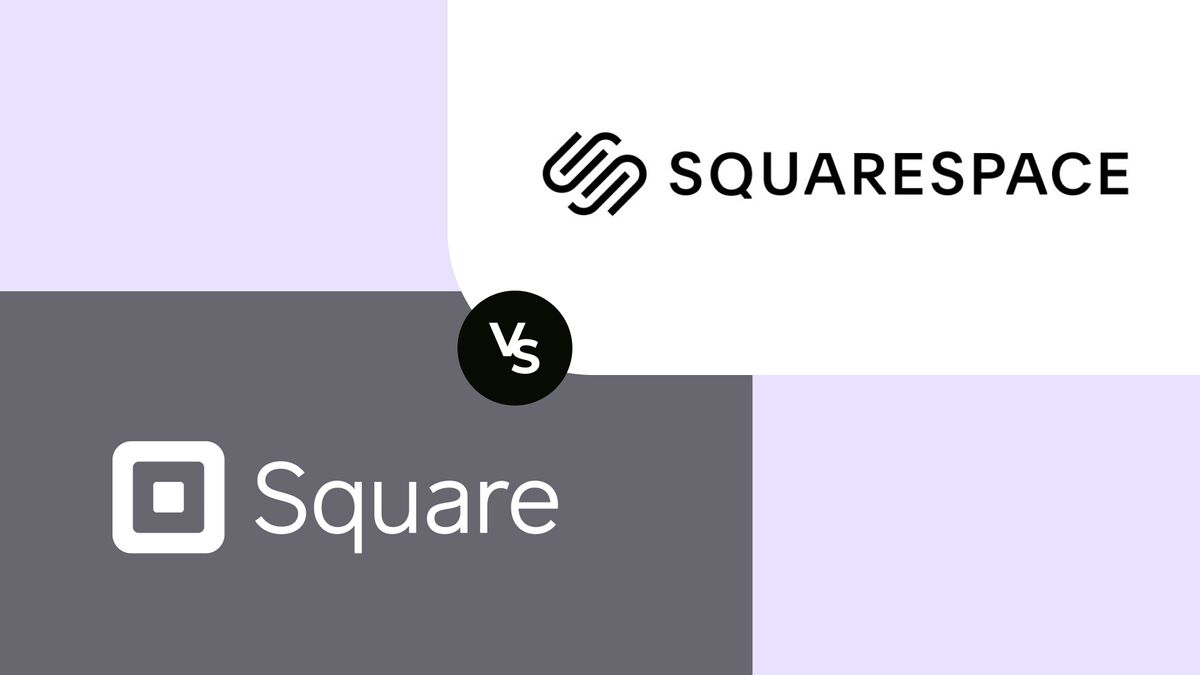Understanding the Basics: What are Square and Squarespace?
Square and Squarespace are two popular e-commerce platforms designed to help businesses establish a strong online presence. While both platforms share some similarities, they cater to different needs and offer distinct features. Square, founded in 2009, is primarily known for its payment processing capabilities, allowing businesses to accept credit card payments using a mobile device. Squarespace, launched in 2003, is a comprehensive website builder that offers a range of templates, design tools, and e-commerce features.
Both Square and Squarespace have evolved over the years to meet the growing demands of online businesses. Square has expanded its services to include online payment processing, invoicing, and inventory management, making it a popular choice for small businesses and entrepreneurs. Squarespace, on the other hand, has focused on providing a user-friendly website builder that integrates seamlessly with its e-commerce features, making it an ideal choice for businesses that want to create a professional online presence.
When considering the difference between Square and Squarespace, it’s essential to understand their target audiences. Square is geared towards businesses that need a simple, cost-effective way to process payments and manage their online presence. Squarespace, however, is designed for businesses that want to create a visually appealing website with advanced e-commerce features. By understanding the unique strengths and weaknesses of each platform, businesses can make an informed decision about which one is best suited for their needs.
In the next section, we’ll explore the key factors to consider when selecting an e-commerce platform, including payment processing, inventory management, and website design. By examining these critical components, businesses can make a more informed decision about which platform is right for them.
How to Choose the Right Platform for Your Online Store
When selecting an e-commerce platform, it’s essential to consider several key factors to ensure that your online store meets your business needs. The difference between Square and Squarespace lies in their approach to payment processing, inventory management, and website design. To make an informed decision, businesses should evaluate their specific requirements and match them with the features offered by each platform.
Payment processing is a critical component of any e-commerce platform. Square is renowned for its payment processing capabilities, offering a range of options, including credit card processing, mobile payments, and online invoicing. Squarespace, on the other hand, integrates with various payment gateways, including Stripe, PayPal, and Apple Pay. When choosing a platform, businesses should consider the types of payments they want to accept and the fees associated with each option.
Inventory management is another crucial aspect of e-commerce platforms. Square offers a robust inventory management system that allows businesses to track products, manage stock levels, and optimize their supply chain. Squarespace also provides inventory management features, including product tracking and order fulfillment. However, its capabilities are not as comprehensive as those offered by Square.
Website design is also a vital consideration when selecting an e-commerce platform. Squarespace is known for its sleek and modern templates, which can be customized to meet the specific needs of each business. Square, on the other hand, offers a more basic website design option, which may not be as visually appealing as those offered by Squarespace. However, Square’s website design is highly functional and easy to use.
Ultimately, the choice between Square and Squarespace depends on the specific needs of each business. By evaluating their payment processing, inventory management, and website design requirements, businesses can make an informed decision about which platform is right for them. In the next section, we’ll delve into the payment processing capabilities of both Square and Squarespace, exploring their fees, security measures, and integration with third-party services.
Payment Processing: A Key Differentiator between Square and Squarespace
Payment processing is a critical component of any e-commerce platform, and Square and Squarespace have distinct approaches to this feature. Square is renowned for its payment processing capabilities, offering a range of options, including credit card processing, mobile payments, and online invoicing. Square’s payment processing fees are competitive, with a flat rate of 2.6% + $0.10 per transaction for online payments.
Squarespace, on the other hand, integrates with various payment gateways, including Stripe, PayPal, and Apple Pay. This allows businesses to choose the payment processor that best suits their needs. Squarespace’s payment processing fees vary depending on the payment gateway used, but most gateways charge a flat rate of 2.9% + $0.30 per transaction.
Security is also a top priority when it comes to payment processing. Both Square and Squarespace offer robust security measures to protect sensitive customer data. Square uses end-to-end encryption and tokenization to secure transactions, while Squarespace uses SSL encryption and PCI compliance to ensure secure payments.
Integration with third-party services is another key aspect of payment processing. Square integrates seamlessly with its own ecosystem of products, including Square Point of Sale and Square Online Store. Squarespace, on the other hand, integrates with a range of third-party services, including accounting software and shipping providers.
When evaluating the payment processing capabilities of Square and Squarespace, businesses should consider their specific needs and requirements. If a business needs a comprehensive payment processing solution with competitive fees, Square may be the better choice. However, if a business prefers to use a specific payment gateway or requires more flexibility in its payment processing options, Squarespace may be the better choice. In the next section, we’ll explore the e-commerce website design options offered by Squarespace and Square, including templates, drag-and-drop functionality, and mobile responsiveness.
E-commerce Website Design: Squarespace vs Square
When it comes to e-commerce website design, both Squarespace and Square offer a range of options to help businesses create a professional online presence. However, the two platforms differ significantly in their approach to website design and customization.
Squarespace is renowned for its sleek and modern templates, which can be easily customized to meet the specific needs of each business. With a range of drag-and-drop tools and a user-friendly interface, Squarespace makes it easy for businesses to create a beautiful and functional website without requiring extensive coding knowledge. Additionally, Squarespace’s templates are highly responsive, ensuring that websites look great on both desktop and mobile devices.
Square, on the other hand, offers a more basic website design option, which is primarily geared towards small businesses and entrepreneurs. While Square’s website design is not as visually appealing as Squarespace’s, it is highly functional and easy to use. Square’s website design is also highly customizable, with a range of templates and drag-and-drop tools available to help businesses create a website that meets their specific needs.
One of the key differences between Squarespace and Square is their approach to mobile responsiveness. Squarespace’s templates are highly responsive, ensuring that websites look great on both desktop and mobile devices. Square’s website design, on the other hand, is not as mobile-friendly, which can result in a poor user experience for mobile users.
When evaluating the website design options offered by Squarespace and Square, businesses should consider their specific needs and requirements. If a business wants a highly customizable and visually appealing website, Squarespace may be the better choice. However, if a business prefers a more basic website design that is highly functional and easy to use, Square may be the better choice. In the next section, we’ll examine the inventory management features of both Square and Squarespace, including product tracking, order fulfillment, and reporting.
Inventory Management: Which Platform Reigns Supreme?
Inventory management is a critical component of any e-commerce platform, and both Square and Squarespace offer robust features to help businesses manage their stock levels. However, the two platforms differ in their approach to inventory management, and the right choice for your business will depend on your specific needs.
Square’s inventory management system is highly comprehensive, allowing businesses to track products, manage stock levels, and optimize their supply chain. Square’s system also integrates seamlessly with its payment processing and point-of-sale systems, making it easy to manage inventory across multiple channels. Additionally, Square’s inventory management system offers advanced reporting and analytics, providing businesses with valuable insights into their inventory levels and sales trends.
Squarespace’s inventory management system is also robust, but it is more geared towards smaller businesses and entrepreneurs. Squarespace’s system allows businesses to track products, manage stock levels, and fulfill orders, but it does not offer the same level of advanced reporting and analytics as Square. However, Squarespace’s system is highly user-friendly and easy to use, making it a great choice for businesses that are new to inventory management.
One of the key differences between Square and Squarespace is their approach to product tracking. Square’s system allows businesses to track products across multiple locations, including warehouses, stores, and online marketplaces. Squarespace’s system, on the other hand, is more geared towards tracking products in a single location. This makes Square a better choice for businesses with complex inventory management needs.
When evaluating the inventory management features of Square and Squarespace, businesses should consider their specific needs and requirements. If a business needs a highly comprehensive inventory management system with advanced reporting and analytics, Square may be the better choice. However, if a business prefers a more user-friendly and easy-to-use system, Squarespace may be the better choice. In the next section, we’ll discuss the integrations and add-ons available for both Square and Squarespace, including social media, shipping providers, and accounting software.
Integrations and Add-ons: Expanding the Functionality of Your Online Store
Both Square and Squarespace offer a range of integrations and add-ons to help businesses expand the functionality of their online store. These integrations can help businesses streamline their operations, improve customer engagement, and increase sales.
Square offers a range of integrations with third-party services, including social media platforms, shipping providers, and accounting software. For example, Square integrates with Instagram and Facebook to allow businesses to sell products directly from their social media profiles. Square also integrates with shipping providers like USPS and UPS to help businesses manage their shipping operations.
Squarespace also offers a range of integrations with third-party services, including social media platforms, email marketing tools, and accounting software. For example, Squarespace integrates with Mailchimp to allow businesses to create and send email marketing campaigns to their customers. Squarespace also integrates with Xero to help businesses manage their accounting and bookkeeping operations.
One of the key differences between Square and Squarespace is their approach to integrations. Square’s integrations are more focused on payment processing and point-of-sale operations, while Squarespace’s integrations are more focused on website design and e-commerce functionality. This means that businesses that need a more comprehensive payment processing solution may prefer Square, while businesses that need a more comprehensive website design solution may prefer Squarespace.
When evaluating the integrations and add-ons offered by Square and Squarespace, businesses should consider their specific needs and requirements. If a business needs a more comprehensive payment processing solution, Square may be the better choice. However, if a business needs a more comprehensive website design solution, Squarespace may be the better choice. In the next section, we’ll investigate the scalability and security measures in place for both Square and Squarespace, including data backups, SSL encryption, and uptime guarantees.
Scalability and Security: Can Your Platform Handle Growth?
As your e-commerce business grows, it’s essential to ensure that your platform can handle the increased traffic and sales. Both Square and Squarespace offer scalability and security measures to help businesses grow and succeed.
Square’s scalability measures include automatic scaling, which allows businesses to handle sudden spikes in traffic without experiencing downtime. Square also offers a range of security measures, including SSL encryption, PCI compliance, and two-factor authentication. These measures help protect businesses from cyber threats and ensure that customer data is secure.
Squarespace also offers scalability measures, including automatic scaling and load balancing. Squarespace also offers a range of security measures, including SSL encryption, PCI compliance, and two-factor authentication. Additionally, Squarespace offers a 99.9% uptime guarantee, which ensures that businesses can operate without experiencing downtime.
One of the key differences between Square and Squarespace is their approach to data backups. Square offers automatic data backups, which ensure that businesses can recover their data in the event of a disaster. Squarespace also offers data backups, but they are not automatic. Instead, businesses must manually backup their data, which can be time-consuming and prone to errors.
When evaluating the scalability and security measures of Square and Squarespace, businesses should consider their specific needs and requirements. If a business needs a platform that can handle sudden spikes in traffic, Square may be the better choice. However, if a business needs a platform that offers a 99.9% uptime guarantee, Squarespace may be the better choice. In the next section, we’ll summarize the key differences between Square and Squarespace and provide guidance on how to choose the best platform for your specific e-commerce needs.
Conclusion: Which Platform is Right for Your E-commerce Business?
In conclusion, the difference between Square and Squarespace is significant, and the right choice for your e-commerce business depends on your specific needs and requirements. Both platforms offer a range of features and tools to help businesses succeed, but they differ in their approach to payment processing, inventory management, website design, and scalability.
If you’re looking for a platform that offers a comprehensive payment processing solution, Square may be the better choice. However, if you’re looking for a platform that offers a more user-friendly website design experience, Squarespace may be the better choice.
Ultimately, the choice between Square and Squarespace depends on your specific e-commerce needs. By considering the key differences between the two platforms, you can make an informed decision that will help your business succeed.
When choosing between Square and Squarespace, consider the following factors:
- Payment processing fees and security measures
- Inventory management features and product tracking
- Website design and customization options
- Scalability and security measures
- Integrations and add-ons available
By considering these factors, you can make an informed decision that will help your e-commerce business succeed.







